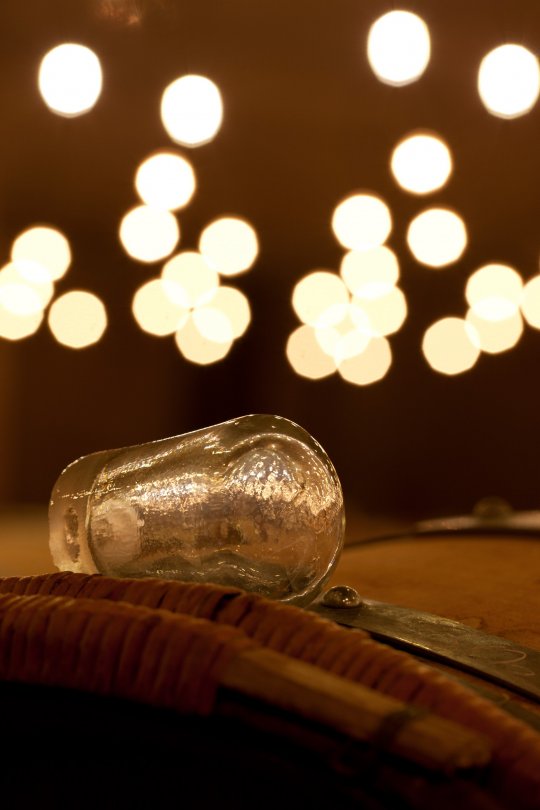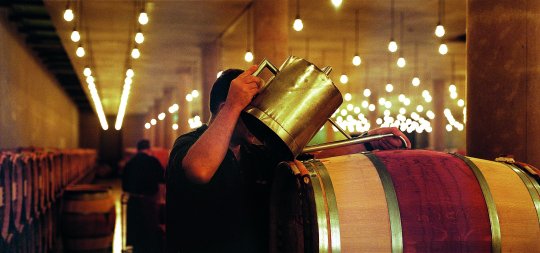During the ageing process, an evaporation phenomenon takes place. A fraction of the wine in the barrel is absorbed by the wood and a fraction of water and alcohol evaporates into the air. The proportion varies depending on conditions in the cellar (humidity and temperature).
To avoid oxidation of the wine and the development of spoilage microorganisms, it is necessary to top-up barrels regularly (also referred to as "topping off").
5.4.1 Topping up
How often should topping up be performed?
Topping up frequency will depend on the stage of the ageing and the barrel's position.
When the bung is on the side of the barrel, as is the case at Château Latour, the barrels are only topped up during racking, i.e. every 3 or 4 months.
If the bung is on the top, topping up is more regular and will depend on the wine's developmental stage.
Immediately following barrelling, a substantial amount of wine is absorbed by the barrel, more frequent topping up is therefore necessary, as often as once or twice a week, depending on conditions in the cellar.
Afterwards, a topping up can be done every 15 days for the rest of the ageing period.
A typical example of ageing with MLF in barrels where the batches are to be blended:
-
Glass bung: topping up once or twice a week
-
MLF completion, racking and changing to a silicon bung: topping up every two weeks
-
After three months, the batches are blended in vats, before being barrelled once again, with the bung on the side of the barrel: topping up is then carried out after the next racking in three or four months' time.
Which wine should be used for topping up?
Traditionally, for each wine, a specific batch is reserved for topping up. Topping-up drums are often used because they allow the batch in question to be inerted with nitrogen and thus protect it from any oxidative deviations. These drums contain anywhere from 30 to 100 litres and facilitate storing different batches separately.
In such cases, a proportion identical to the batch in the barrel can be used. When the quantity per appellation is very small, a small volume of press wine can be retained to incorporate gradually.
In the event that the bung is on the side, topping up intervals can be less frequent and a full barrel or a half-barrel can be used for topping up.
What are relevant tests prior to using this batch?
Tasting is always important to detect any problems. In order to eliminate cross-contamination, a test of the volatile acidity and a B. bruxellensis count are advisable.
It is also a good idea to check the free SO2 level and readjust it if necessary.


